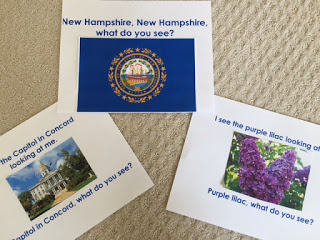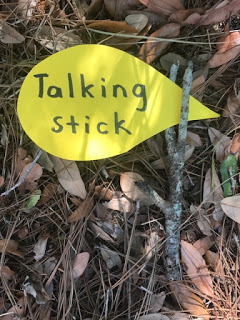National Tell A Story Day (April 27th) is celebrated by encouraging people of all age groups to tell a story. A story can be read from a book, an imaginary story, or an actual memory.

In person or online, stories will capture children’s attention and nurture their literacy skills. Oral language, phonological awareness, comprehension, sequencing, and multiple skills are reinforced with stories. The secret ingredient to a good story is YOU! You add the magic with your enthusiasm and unique personality.
Before telling your story you need to focus children’s attention with a chant or rhyme similar to the ones below:
If you want to hear a story, (Snap fingers to the beat.)
This is what to do.
Sit down quietly
And I’ll tell one to you!
That’s right, that’s right, (Point to children sitting quietly.)
That’s right, that’s right!

Two little hands go clap, clap, clap. (Clap hands 3 times.)
Two little fingers go snap, snap, snap. (Snap fingers 3 times.)
Two little eyes go blink, blink, blink. (Blink eyes.)
If you want to hear a story go wink, wink, wink. (Wink eyes.)
(Lower your voice as you say each line.)
Hands up high. (Hands in the air.)
Hands down low. (Hands down.)
Hide those hands, now. (Hands behind your back.)
Where did they go? (Shrug shoulders.)
One hand up. (Right hand up.)
The other hand, too. (Left hand up.)
Clap them, (Clap.)
Fold them, (Fold in lap.)
Here’s a story for you!
Here's a participation story where children can listen and follow directions.
The Wiggle Family
Directions: Assign children to be the different characters below. (Two or three children can be each character.) Instruct them to stand up, wiggle, and then sit back down whenever their name is mentioned in the story.
Hint! When telling the story, pause slightly after saying each character's name.
Mama Sister Baby Cat Grandma
Papa Brother Dog Grandpa
One day Mama Wiggle said, "It’s such a beautiful day. Why don't we all get in the van and go to Grandma and Grandpa Wiggle's house. We’ll take a picnic lunch and have a great time!" Papa got the van ready while Sister packed a picnic lunch. Mother got the baby, and Brother got the cat and dog. Soon Mother, Father, and Baby were in the front of the van, and Sister and Brother, the cat and the dog were in the back of the van and they were on their way to Grandma and Grandpa Wiggle’s house..
"Oh, no," said Sister, "I forgot the picnic lunch!"
So Mama told Papa to stop the van. They turned around and drove back to their house to get the picnic lunch. Sister ran back to the house while the others sat in the van. Just then the dog started barking and scared the cat who jumped out of the van. Brother had to chase the cat and bring her back to the van. The Baby got so upset, he just cried and cried. Finally, Mama, Papa, Sister, Brother, Baby, the dog, and cat were all back in the van and were on their way to Grandma and Grandpa's house.
When they arrived at Grandma and Grandpa’s house everyone was so happy! The cat and dog jumped out of the van first, followed by Brother and Sister. Mother, Father, and Baby got out of the van last.
They spread a blanket under a large tree and put out the picnic lunch. And, oh, what a feast it was! They had sandwiches, and fried chicken, and cupcakes and fruit. After lunch Grandpa, Grandma, Mother, Father, and the Baby fell asleep and took a nap. Brother and Sister chased the cat and dog around and played hide and go seek.
It started to get dark, so Grandpa and Grandma gave Mother, Father, Baby, Sister and Brother a big hug good-bye. They all hopped in the van with the cat and the dog and set off towards their home.
What a special day it had been!
Story Bracelet
String color-coded beads on a pipe cleaner to encourage children to retell stories.
Three Pigs
Once upon a time there were three little pigs. (3 pink beads)
The first little pig built a house of straw. (1 yellow bead)
The second little pig built a house of sticks. (1 brown bead)
The third little pig built a house of bricks. (1 red bead)
One day a big bad wolf came along. (1 black bead)
He went to the house of the first little pig and said,
“Little pig, little pig, let me come in.” (Touch yellow bead.)
The little pig said, “Not by the hair of my chinny chin chin.”
“Then I’ll huff and I’ll puff and I’ll blow your house in”…
The wolf climbed up on the chimney so he could get the pigs.
The pigs put a big pot of boiling water in the fireplace. (blue bead)
When the wolf hit the hot water he jumped out of the fireplace and was never heard from again.
And that’s the story of the three little pigs!
(Twist ends of pipe cleaner to make a bracelet.)






















































